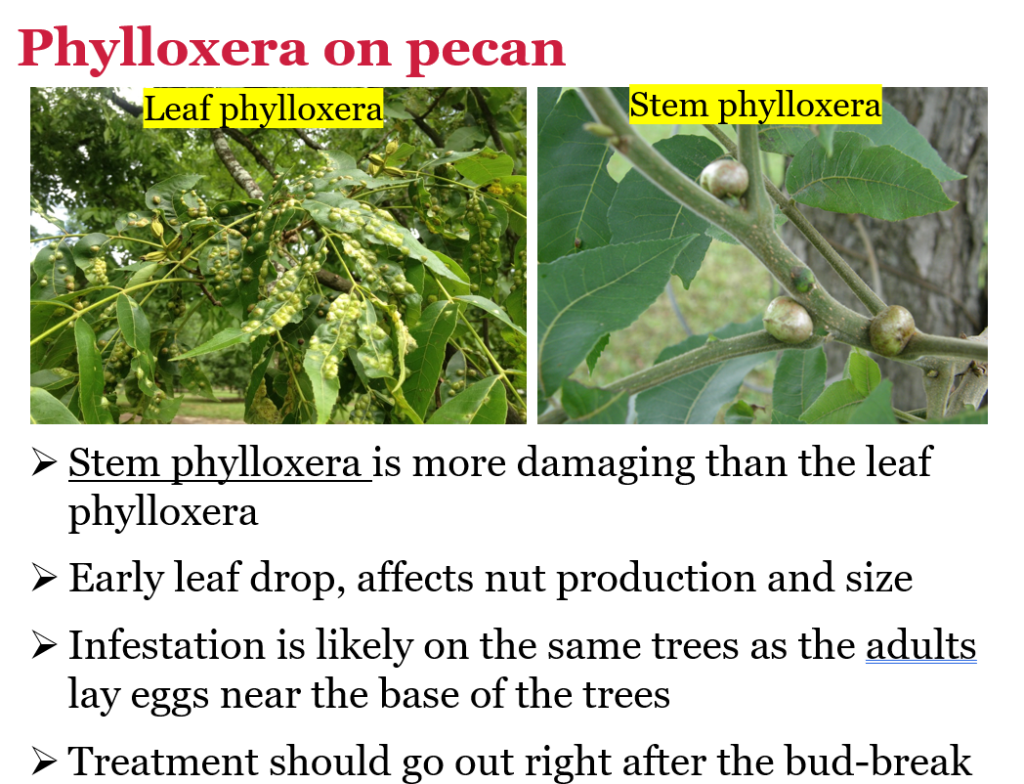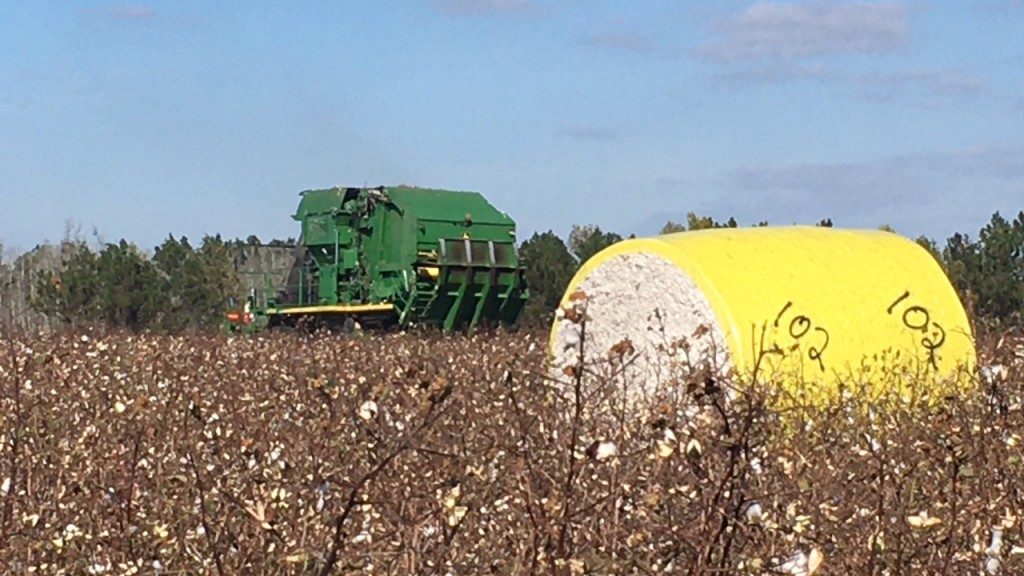Current situation: Corn planting is starting around the county. Peanut growers are deep turning in preparation of the new crop. Burndown herbicides are going out on cotton and peanut fields. In a blog post by Pam Knox, earlier this week NOAA released their predictions for what the spring climate will be like. They are calling for dry conditions in the western US and warmer conditions over much of the continental US this spring. This could lead to the expansion of drought there as there is not likely to be enough precipitation to pull them out of the drought.
I had a question about GDD this past week from a couple corn growers. The chart below shows the GDD from the last two weeks. A base temp of 50 degrees was used for this chart. In Moultrie, we have accumulated 138 GDD from March 9 to March 22, 2025. This is a little below average compared to last year and the historical average.

Corn: I have been getting a question or two about cover crop termination timing and corn planting. Dr. Eric Prostko, UGA Corn Weed Specialist, suggests that the optimum timing for cover crop control in field corn is 10-14 days before planting. Planting into green cover can result in corn yield losses (up to 10% in some trials).
How late can I plant corn? Early planted corn will traditionally yield more than late planted corn regardless of region within the state. Delaying corn planting into the summer can dramatically decrease yield potential. Generally speaking, yields decline at a rate of ¾ bushels per day as you progress later in the planting window and can rise to about 2.5 bushels per day when planting after the optimal window. If corn planting is delayed into the summer, yield losses become much more dramatic.
Cotton: Controlling wild radish in burndown applications has been the topic of the week. The most effective and economical choice for controlling primrose and radish is an application of 2,4-D alone or mixed with any Roundup mixture (such as Roundup + Valor) at least 30 days before planting. 2,4-D is more effective than dicamba on primrose, radish, and spiderwort; it is less effective on horseweed and peanut. For primrose, 2,4-D at 12 oz/A of a 3.8 lb/gal formulation mixed with Roundup is sufficient and would reduce the interval between application and planting non-Enlist cotton cultivars; however, rates of 1.0 to 1.5 pt/A are needed for wild radish. Dicamba will also control primrose when mixed with Roundup; dicamba is not very effective on wild radish.
What if I don’t want to put 2,4-D or dicamba in my sprayer? For radish of any size, Roundup mixtures with Harmony Extra are very effective. If you have full bloom radish, Roundup + Valor will provide 75-90% control. If you are close to planting, then paraquat plus diuron will give you excellent control.
What are my plant back restrictions when using Valor in cotton burndown?
- In strip-till cotton where the strip till rig (including ripper shank) is run after application and before planting, Valor plant-back intervals are as follows:
1) >30% ground cover = 7 days
2) 10–30% ground cover = 14 days plus 0.5″ rain/irrigation
3) <10% ground cover or tillage = 21 days plus 1″ rain/irrigation - In no-tillage production or when the strip is implemented prior to
application. Valor plant-back interval should be 28 days. Additionally,
0.5″ (>10% ground cover) or 1″ (<10% ground cover) rainfall/irrigation is
needed. If Reflex (or generic) will be applied PRE, suggest adding an
additional 7 days to planting intervals. - Add a nonionic surfactant or crop oil concentrate (preferred), regardless of
glyphosate brand.
Peanuts: According to Dr. Bob, the Peanut Rx website will be fully updated on Monday. I have my doubts, but we will see. The link is below. https://peanutrx.org
As we get closer to planting time, Dr. Scott Monfort reminds growers during production meetings to pay attention to seed quality. Growers need to pay attention to the % germ and % cold germ. Storage does influence seed quality. Please keep in a shaded and cool environment and avoid van bodies, trailers or hot sheds. These are places where temperatures, humidity, and other factors can fluctuate. Plant the oldest seed first and please keep a 1-2 lb sample of each lot and store in a cool place in case an issue arises.

Pecans: As the weather warms up, pecan growers need to manage phylloxera in orchards that have a pest history of them. Phylloxera are tiny, aphid-like insects that cause the warts on the leaves. Usually they are found in older, mature orchards. There are numerous species of phylloxera, some cause the warts on the leaves and others cause the warts on the stems.
Control – To control phylloxera, growers should consider an insecticide application at budbreak. The budbreak application is effective because the insecticide application coincides with egg hatch and the young worms go straight to the buds to feed. Their feeding forms the galls, which encapsulates the insect. Once the galls form, insecticides cannot penetrate. According to pest management handbook insecticides such as imidacloprid or Centric (thiamethoxam) are recommended for control.

Wheat: I received a question or two about disease management in wheat. Wheat fields that I have been in range from stem elongation to flag leaf emergence. I have been seeing powdery mildew in area wheat fields this week. On all but the most susceptible varieties, powdery mildew confined to the lower leaves has little or no effect on yield as these leaves often naturally senesce before heading. However, protecting the flag leaf is critical to reaching high yields. Fungicides should not be applied until flag leaf emergence, unless a variety is susceptible. If a fungicide is applied too early, the plant (flag leaf) will not be protected from other foliar diseases during the latter half of the grain-filling period.

How do we manage this Fusarium Head Blight (FHB)? FHB control using fungicides can be a challenge because of timing. Foliar applications with a triazole fungicide work best when applied at or within a week of early flowering (Feekes 10.5.1). Applying fungicides earlier (at heading, Feekes 10-1-10.5) will not sufficiently suppress FHB and DON. However, recent studies have shown that delaying application 5-7 days after the start of flowering can still suppress FHB and DON — in other words, later fungicide applications can still be effective in case of delays (such as weather) (Source – Optimizing Fungicide Use for Fusarium Head Blight (Scab) and
Associated Mycotoxins – Publication from the Crop Protection Network).
According to the publication How a Wheat Plant Develops: Identifying Growth Stages: It usually takes 3–5 days for the head to be fully extended above the flag leaf and another 3–5 days to flower after full heading.
Forages: Comparing summer annual forages
Summer annual forages can provide high yields of good quality forage during late spring and summer for both beef and dairy producers. Most of the warm season annual grasses emerge and establish quickly and are very drought tolerant. They can be used for grazing, hay or silage. Producers need to manage these species carefully in stressful conditions because they can accumulate levels of prussic acid and nitrates that can be toxic to livestock. There are many choices when it comes to summer annual forages, let’s compare a few of them. READ MORE
If you have any questions please contact your local county Extension agent.
Have a great week,
Jeremy M. Kichler
Colquitt County Extension Coordinator
The University of Georgia Cooperative Extension does not endorse or guarantee the performance any products mentioned in this update.
